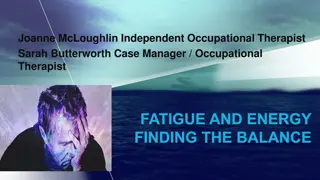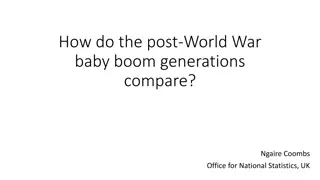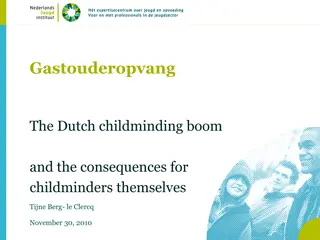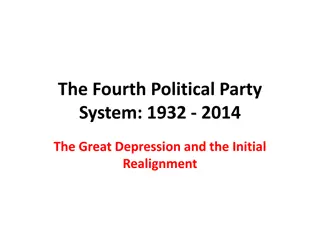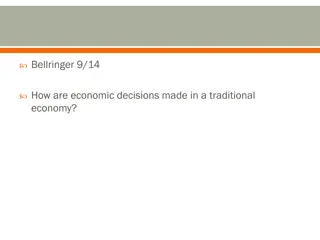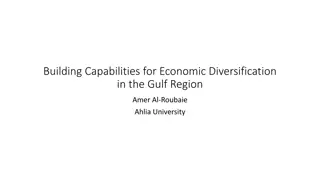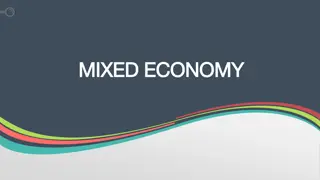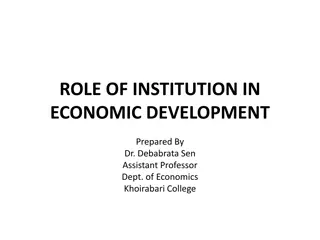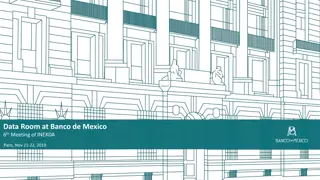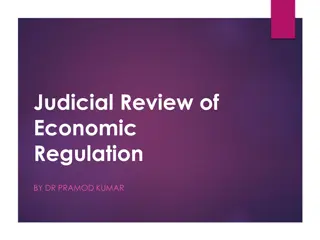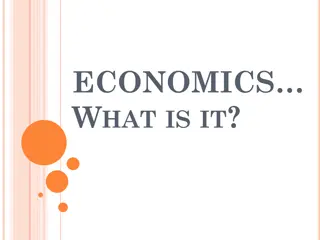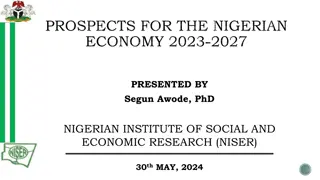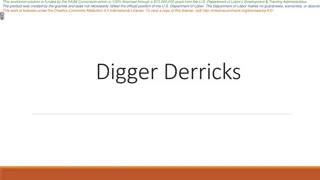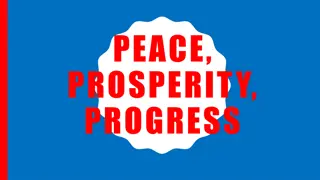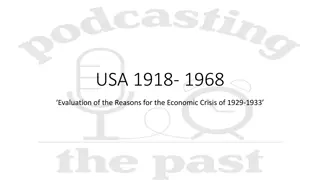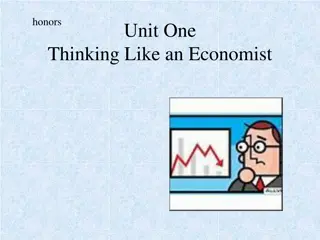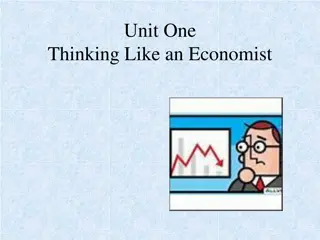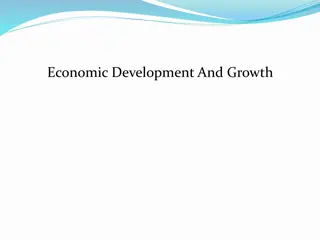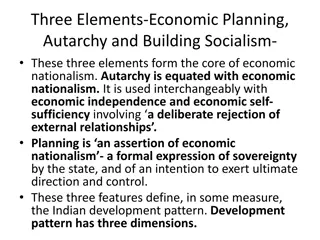Iceland's Economic Journey: From Boom to Bust
Iceland's economic trajectory from being comparable to Ghana in 1904 to achieving high levels of prosperity by the 21st century, followed by a stark downturn due to political and economic mismanagement, offers a case study on the impact of governance on economic growth and stability.
Download Presentation

Please find below an Image/Link to download the presentation.
The content on the website is provided AS IS for your information and personal use only. It may not be sold, licensed, or shared on other websites without obtaining consent from the author. Download presentation by click this link. If you encounter any issues during the download, it is possible that the publisher has removed the file from their server.
E N D
Presentation Transcript
FROM BOOM TO BUST The Case of Iceland Thorvaldur Gylfason Presentation at the Annual Meetings of the American Economic Association in Denver, 3-6 January 2011
BACKGROUND In 1904, when Iceland was granted home rule by Denmark after more than 600 years under first Norwegian and then Danish rule, Iceland s per capita GDP was about half that of Denmark. The purchasing power of Iceland s per capita GDP in 1904 was similar to that of today s Ghana. Iceland was Ghana, with a difference: most of Iceland s impoverished population had been literate since 1800. Icelanders were thus well prepared for the modern age. During the 20th century, Iceland s per capita GDP grew by 2.6 per cent per year on average compared with Denmark s 2.0 per cent. This per capita growth differential of 0.6 per cent per year enabled Iceland to catch up with Denmark and even to join Norway in the top position on the United Nations Human Development Index in 2006. The Human Development Index is an average of three indices representing the purchasing power of per capita GDP, life expectancy, and education, measured by a weighted average of adult literacy (2/3) and school enrolment (1/3). Mainly through hard work and improved education, Iceland catapulted itself into an egalitarian and prosperous welfare state that felt at home in the Nordic family. For various reasons, including divisive squabbling and electoral laws that favored rural areas over Reykjav k, Social Democrats had a relatively minor direct influence on Iceland s political development, but this did not seem to set Iceland apart from the Nordic countries. The distribution of income in Iceland was until the mid-1990s about as equal as in Scandinavia and Finland according to official estimates of the Gini index of income inequality.
DIFFERENT COURSE In domestic affairs, Iceland charted a course that was quite different from the Nordic norm. The main reason for this divergence appears to be the overrepresentation of rural areas in parliament that still imparts a provincial, protectionist bias to economic policy and to the structure and functioning of the economy. Throughout most of the 20th century, the number of votes needed to elect a member of parliament for the Reykjav k area was two, three, and up to four times as large as the number of votes needed in the rural electoral districts, in effect giving each farmer the ability to cast the equivalent of two to four votes in parliamentary elections. Until 2003, the provinces kept their majority in parliament even if nearly two thirds of the people now live in Reykjav k. This helps explain the Icelanders somewhat insular mentality and, with it, the current lack of enthusiasm about joining the EU, even after the crash of 2008. The deliberate bias built into the electoral law resulted in a neglect of education in the provinces to slow down the migration to Reykjav k as well as a slow and lopsided transition from a rigid, quasi-planned economy toward a more flexible, mixed, social market economy, and in a similarly reluctant and slow depolitization of economic life, including the banks that were privatized la russe as late as 1998-2003, several years after the privatization of commercial banks in East and Central Europe and the Baltic countries, and crashed spectacularly in 2008. Foreign creditors needed to write off debts equivalent to about five times Iceland s GDP.
HOW DID ICELAND GROW? Iceland s political failings should not necessarily have been expected to stifle economic growth, even if growth might have been more rapid without those failings. The share of the Icelandic labor force (25-64 year olds) with no more than primary education is still twice that of Denmark, or 37 per cent in Iceland compared with 19 per cent in Denmark, 21 per cent in Finland, 23 per cent in Norway, and 16 per cent in Sweden. Even so, Iceland did many things right. The mechanization of the fishing fleet was an important engine of economic growth. The gradual extension of the fisheries jurisdiction from three miles in 1901 to 200 miles in 1976. The harnessing of the country s hydroelectric and geothermal energy potential from the 1940s onward. We need to distinguish between national wealth and national income. Iceland maintained a rapid flow of income per person by, among other things, running down fish stocks and accumulating foreign debts. Debt accumulation escalated out of control before the crash of 2008.
WHAT WENT WRONG? The euphoria that swept Iceland during the boom was not shared by all. While bustling private jet traffic kept residents near Reykjav k airport awake at night and the streets were jammed by monstrous SUVs on aircraft tires, many Icelanders looked on in baffled astonishment. Of the country s 182,000 families, more than 100,000 have little or no debt; clearly, they were not invited to the party, or chose not to attend. At the other end of the scale, 244 families at the end of 2008 had debts in excess of $1.2 million, with assets that fall short of their debts. Further, 440 families have debts in excess of their assets that is, negative net worth to the tune of $400,000 or more. Of the 182,000 families, 81,000 have assets below $40,000, whereas 1,400 families have assets of $1.2 million or more. These numbers suggest gross inequality in the distribution of wealth which is hardly surprising in view of the fact that inequality in the distribution of the disposable income of households increased sharply from approximate parity with the Nordic countries in the mid-1990s to parity with the United States in 2007, a dramatic change resulting from a deliberate shift of the tax burden from the rich to the rest. Before the onset of the crisis, increased disparity of income and wealth was one of several signs that Iceland was headed for trouble. Increased inequality also preceded the Great Depression in the US 1929-39.
ICELAND: GINI INDEX OF INEQUALITY 1993-2008 45 40 35 30 25 20 15 10 5 0
RATIO OF BANK ASSETS TO GDP 1992-2007 10 Switzerland Iceland 9 8 7 6 5 4 3 2 1 0
CENTRAL BANK FOREIGN EXCHANGE RESERVES 1989-2008 % of short-term debt 140 120 100 80 60 40 20 0
GROWTH STRATEGY? GROW, BABY, GROW Icelandic banks copied each other s business model, and took on excessive risk Fine while the going was good But, if one fell, others were likely to fall as well Banks faced an insignificant home market, so their choice was essentially to evolve (i.e., become international) or die Banks chose the former They became international, deriving in 2007 half their earnings from abroad 31 subsidiaries in 21 countries (October 2007) only to suffer the latter
BLACKS RECIPE FOR CONTROL FRAUD The Best Way to Rob a Bank is to Own One When a senior officer deliberately causes bad loans to be made he does not defraud himself He defrauds the bank s creditors and shareholders, as a means of optimizing fictional accounting income It pays to seek out bad loans because only those who have no intention of repaying are willing to offer the high loan fees and interest required 1. Grow really fast 2. Make really bad loans at higher yields 3. Pile up debts 4. Put aside pitifully low loss reserves
BLACKS RECIPE FOR CONTROL FRAUD The Best Way to Rob a Bank is to Own One When a senior officer deliberately causes bad loans to be made he does not defraud himself He defrauds the bank s creditors and shareholders, as a means of optimizing fictional accounting income It pays to seek out bad loans because only those who have no intention of repaying are willing to offer the high loan fees and interest required 1. Grow really fast 2. Make really bad loans at higher yields 3. Pile up debts 4. Put aside pitifully low loss reserves
GDP PER HOUR WORKED 2009 (US DOLLARS, PPP) Luxembourg Norway Belgium Netherlands United States France Germany Ireland Austria Sweden Australia United Kingdom Denmark Canada Finland Spain Switzerland New Zealand Italy Iceland Greece Cyprus Malta Poland Czech Republic Hungary Portugal Estonia Lithuania Turkey Latvia 0 10 20 30 40 50 60 70 80






